Rodgers’ Absence Could Stunt Growth With Rookie Receiver
GREEN BAY, Wis. – With a new coordinator to set the offensive vision, the Green Bay Packers’ offseason program is set to begin on Monday. MVP quarterback Aaron Rodgers won’t be there.
With an early-round receiver or three expected to become key contributors as rookies, the Packers will begin three weeks of voluntary practices on May 23. Rodgers won’t be there.
According to the Milwaukee Journal Sentinel’s Tom Silverstein, Rodgers is not expected to attend the Packers’ offseason program aside from attending the mandatory three-day minicamp that will be held in June.
Rodgers skipped everything offseason-related last year, when he was mired in his dispute with franchise leadership. It hardly impacted his performance, with Rodgers returning to win his fourth MVP.
Last year, Rodgers was surrounded by a veteran cast of characters, including receivers Davante Adams, Marquez Valdes-Scantling, Allen Lazard and Randall Cobb and tight ends Robert Tonyan and Marcedes Lewis.
This year will be different. Adams was traded to Las Vegas, Valdes-Scantling signed with Kansas City and Tonyan may or may not be back from a torn ACL in time to start the season. With a massive hole in the receiver room, the Packers figure to invest heavily at receiver in the 2022 NFL Draft. Whether it’s a first-round pick, a second-round pick or a combination, the rookie receiver(s) will be expected to become instant contributors.
Rodgers’ potential absence from nine of the 12 scheduled offseason practices won’t help with the breaking-in process.
So, how does chemistry form between quarterback and receiver when the quarterback isn’t present?
“Yeah, it’s a great question,” receivers coach and passing-game coordinator Jason Vrable said on Tuesday. “I think you build a foundation of our system, right? You start with your formations. You start with the playbook. They’ve got to get comfortable with that before ‘12’ is pulling out things and demanding what he needs from them.
“I think the playbook itself is going to take all the way through training camp, period. I think me being here for three years in this exact system and knowing exactly what ‘12’ is looking for, along with Matt (LaFleur), is going to help a lot.”
That’s true, but there’s no substitute for on-the-field reps.
For years, Rodgers has said there’s a playbook that’s on paper and there’s a playbook that he runs on the grass. With eight seasons together, Rodgers and Adams could look at each other and conjure up the right adjustment to whatever the defense threw at them. Veterans Cobb and Lazard have a strong chemistry with Rodgers. Getting to that stage with a rookie, Vrable said, will start with the newcomer having a “coach’s level” understanding of that paper playbook.
“There may be some things that you know you can’t do with some younger guys that Davante, just through experience, him and Aaron’s connection, there may be some things that are going to take some time to develop,” new offensive coordinator Adam Stenavich said. “But I think for the most part, we’re looking for the pieces that are going to allow us to run the offense that we want to run.”
17 Facts to Know About Replacing No. 17, Davante Adams
1. Missed Connection
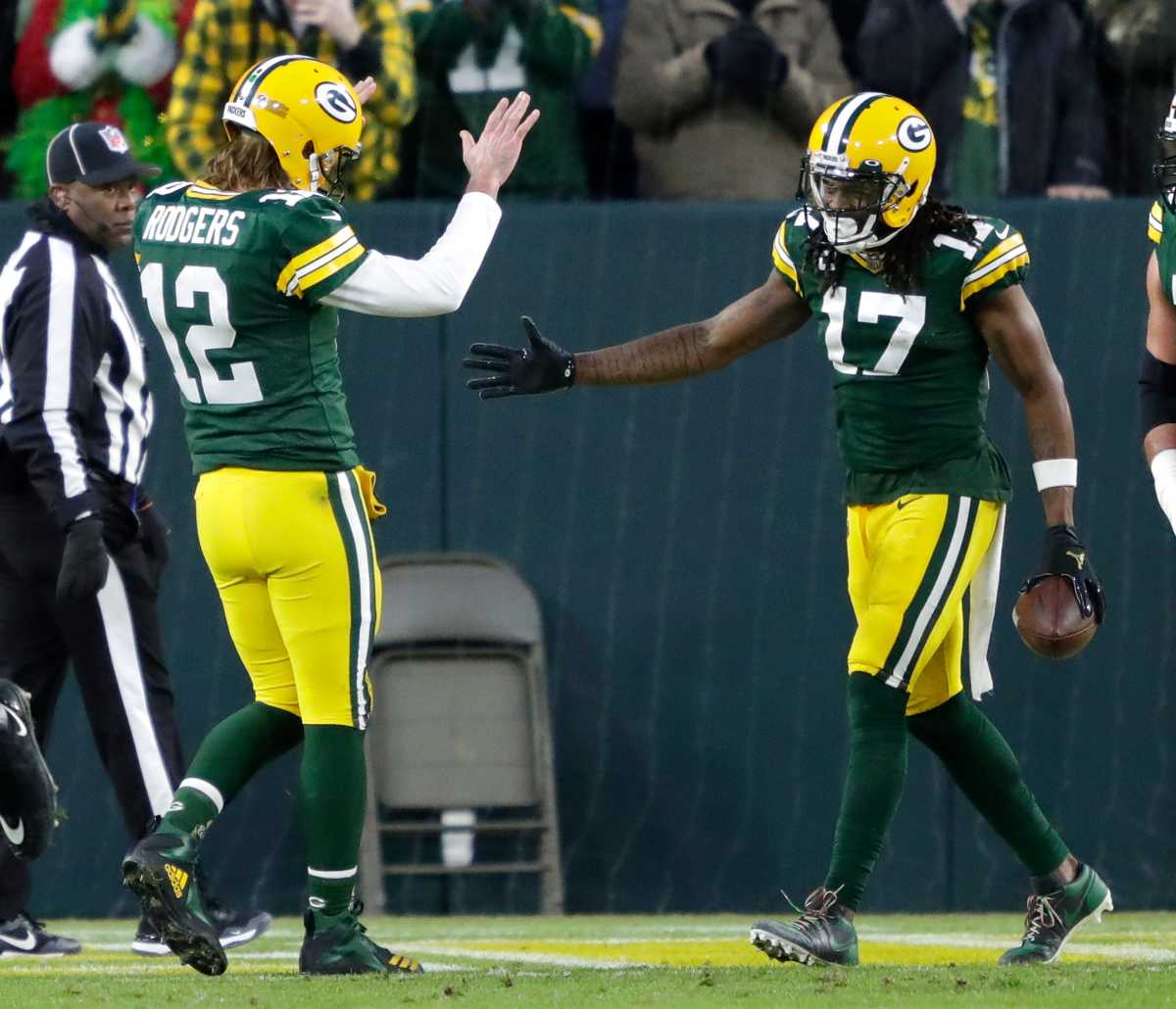
In 2014, the Packers used a second-round draft choice on Adams. He started right away but had to bide his time behind Jordy Nelson and Randall Cobb. Those two veterans had a connection with Aaron Rodgers that Adams had to build.
When they did, they became practically unstoppable.
“I told him in the locker room, the thing that I will miss 20 years down the line is moments where you make a subtle adjustment, you look over at the guy and it’s a stud like 17 and he just went like this (head nod),” Rodgers said after a victory at Chicago that was highlighted by a key 41-yard pass that was created with nothing more than a nod. “Like the whole body started tingling. I just knew it was going to be one of those special plays.”
The Packers’ rookie receivers, obviously, won’t have that. Rodgers probably will have to lean on Allen Lazard and Cobb early in the season.
2. Good Rookie History
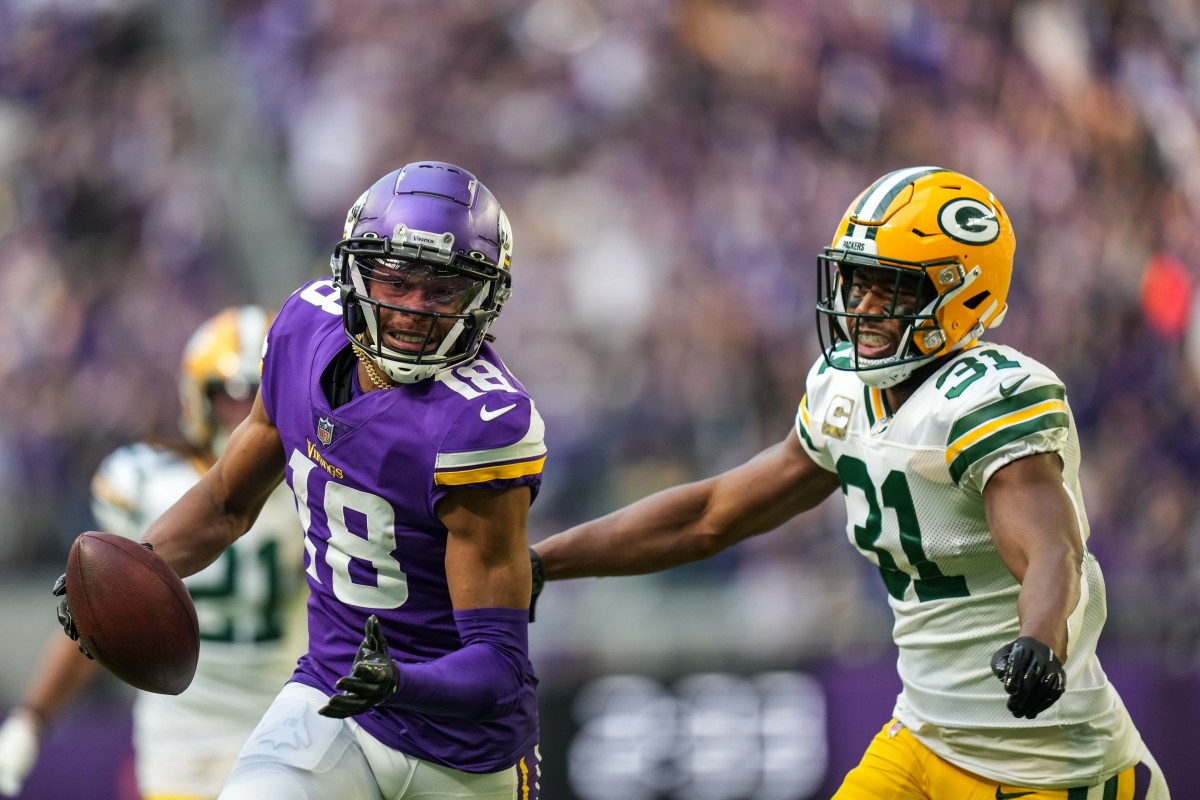
Over the last decade’s worth of drafts, from 2012 through 2021, a total of 21 receivers were selected between No. 18 (four picks before Green Bay’s spot at No. 22) and No. 32 (four picks after Green Bay’s spot at No. 28).
Of that group, only two receivers finished their rookie season with 1,000-plus yards. One was Justin Jefferson, the 22nd pick of the 2020 draft by Minnesota who dominated his rookie campaign with 88 receptions for 1,400 yards in seven scores. He is a cream-of-the-crop player.
The other was Kelvin Benjamin, the No. 28 pick of the 2014 draft by Carolina who turned 73 receptions into 1,008 yards and nine scores but faded away. Calvin Ridley (No. 26 by Atlanta in 2018) and DeAndre Hopkins (No. 27 by Houston in 2013) also topped 800 yards as rookies.
3. Bad Rookie History
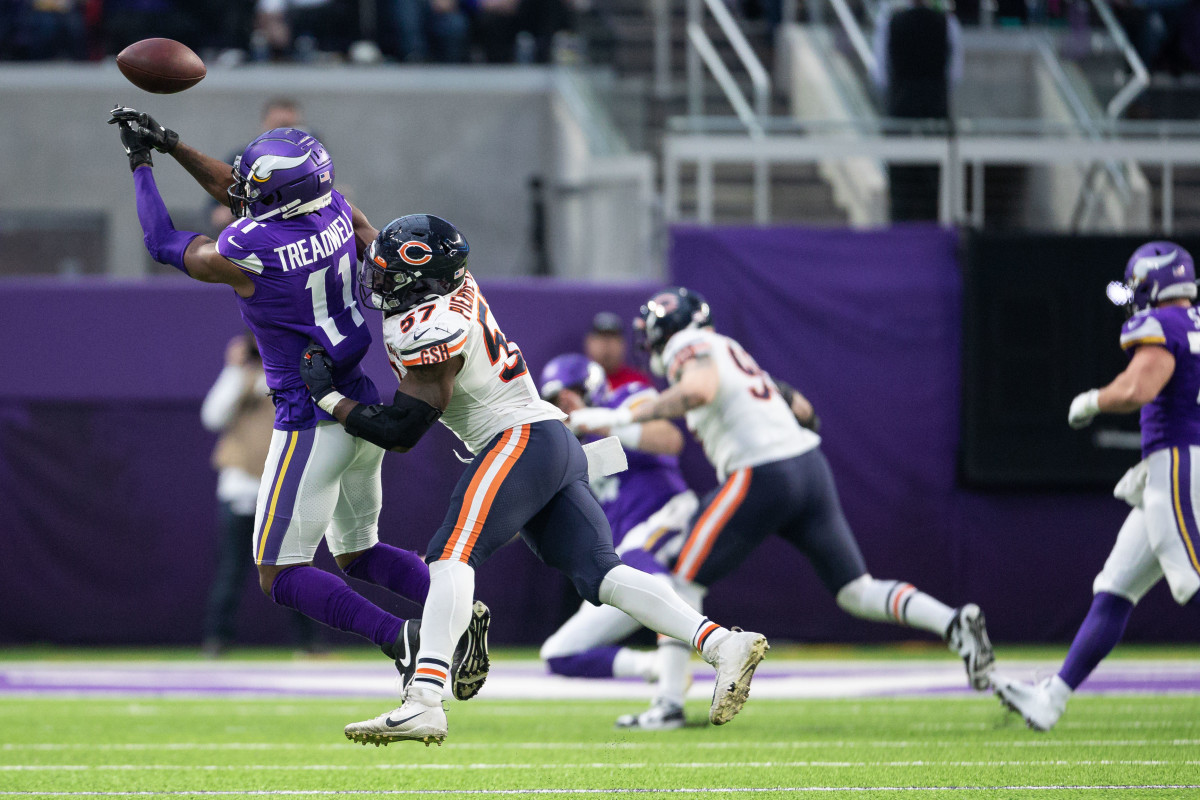
Contrast those four rookie studs with these four rookie duds who would up being massive busts. A.J. Jenkins, the 30th pick of the 2012 draft by San Francisco, was a healthy scratch for most of his rookie season and dropped his only target. Laquon Treadwell, the 23rd pick of the 2016 draft by Minnesota, caught one pass in nine games. Josh Doctson, the 22nd pick of the 2016 draft by Washington, missed most of his rookie season due to an Achilles injury and caught only two passes. N’Keal Harry, the 32nd pick of the 2019 season by New England, missed the first half of the season with an ankle injury and caught only 12 passes.
4. Packers Rookie History
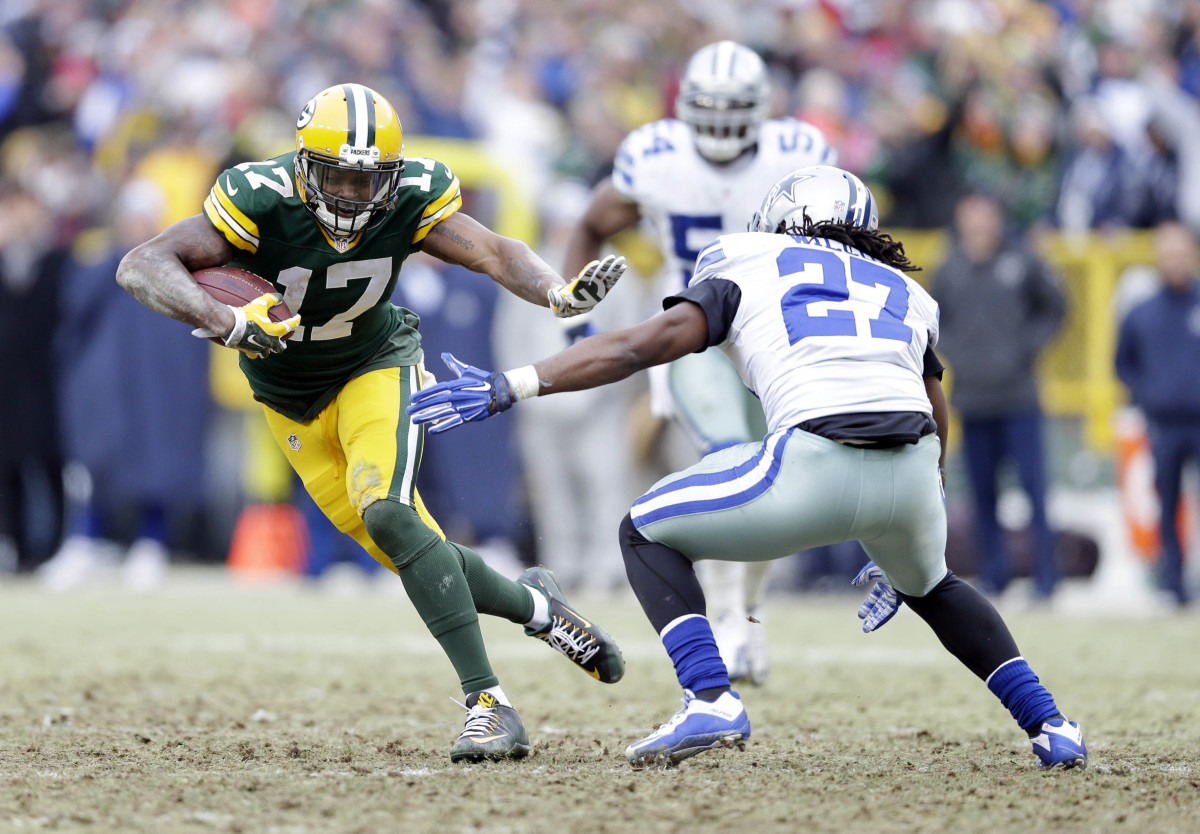
According to Pro Football Reference’s Stathead, 20 rookie/first-year receivers have played alongside Rodgers. Only three topped 25 receptions as a rookie: Adams with 38 in 2014, Marquez Valdes-Scantling with 38 in 2018 and Nelson with 33 in 2008.
Combined, all of those rookies scored 13 touchdowns. Adams averaged 14.5 touchdowns during his back-to-back All-Pro seasons.
5. Supply and Demand
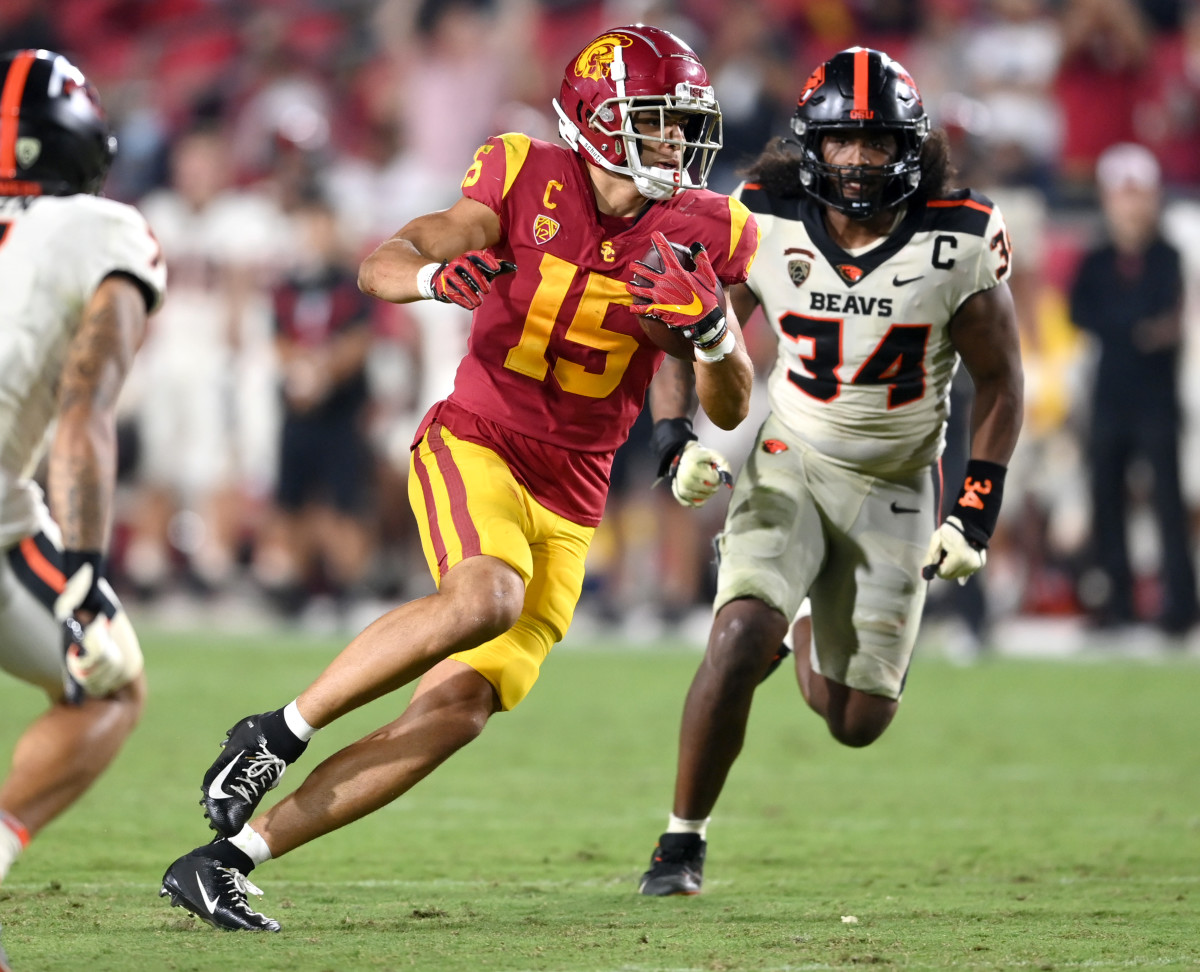
The Packers, who own No. 22 and No. 28 of the first round and No. 53 and No. 59 of the second round, are well-positioned to bolster the weakest receiver corps in the NFL outside of Atlanta.
In Daniel Jeremiah’s list of the top 50 players in the draft for NFL.com, eight are receivers. In Dane Brugler’s massive draft preview for The Athletic, 10 of his top 61 players are receivers.
6: Relative Athletic Score
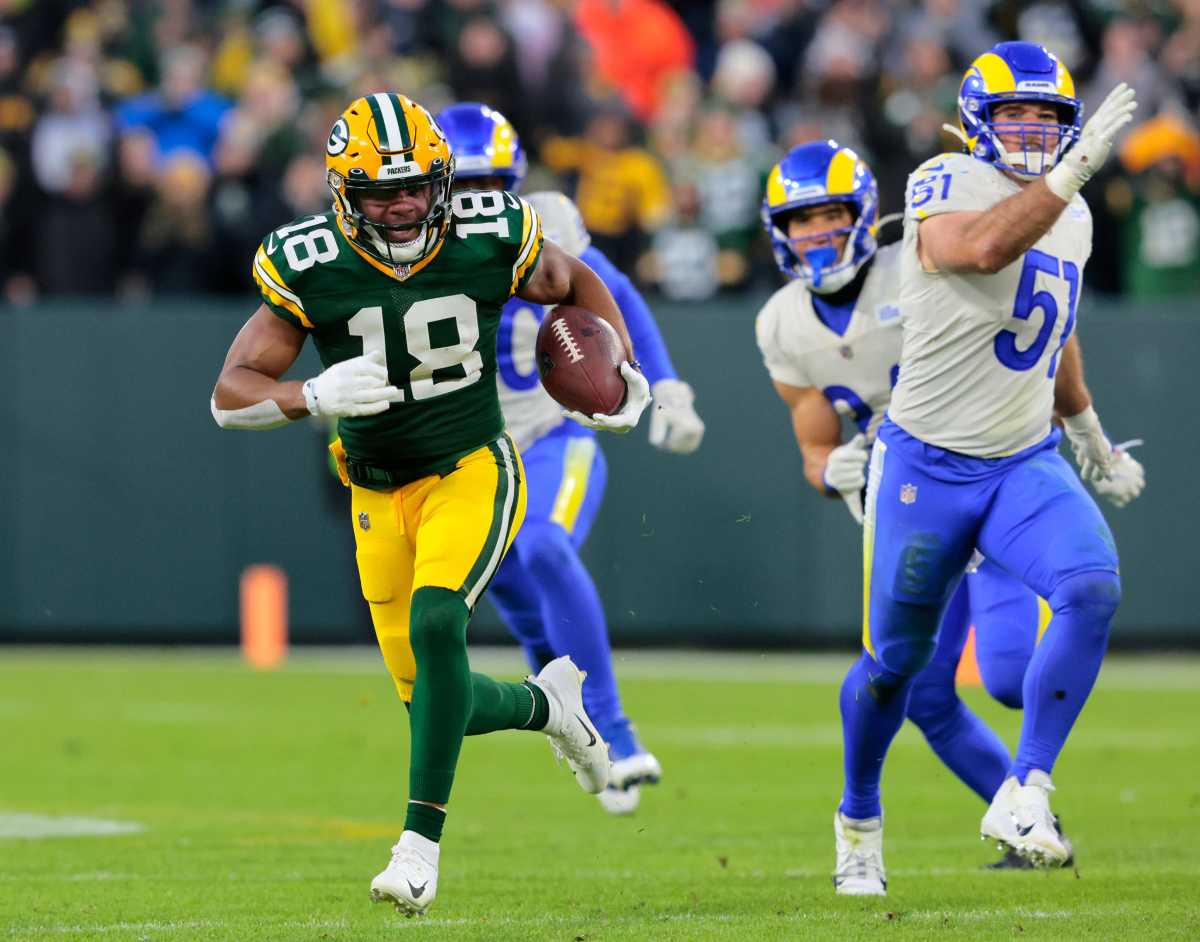
Everyone loves RAS, and for good reason. It combines all of a prospect’s measureables and plots them on a handy 0-to-10 scale alongside other players at his position. A RAS of 10 makes you absolutely elite from a size-athleticism perspective. A RAS of 0 makes you a 49-year-old sportswriter.
A great RAS doesn’t foreshadow great production. Since 2006, the Packers have selected nine receivers with a RAS of 8.0-plus. Starting at the top: Jeff Janis, Equanimeous St. Brown, Charles Johnson, Marquez Valdes-Scantling, Trevor Davis, DeAngelo Yancey, Greg Jennings, J’Mon Moore and David Clowney.
During that same span, they selected eight receivers with a RAS of 7.5 or below. Starting at the bottom: Cory Rodgers, Randall Cobb, Jared Abbrederis, Amari Rodgers, Davante Adams, James Jones, Malachi Dupre and Jordy Nelson. Cobb's RAS was a woeful 3.65.
The lesson here is pretty obvious. You don’t have to be a great athlete to be a great receiver. It helps, sure, but bigger and faster doesn’t mean better and fantastic.
7. Speaking of RAS
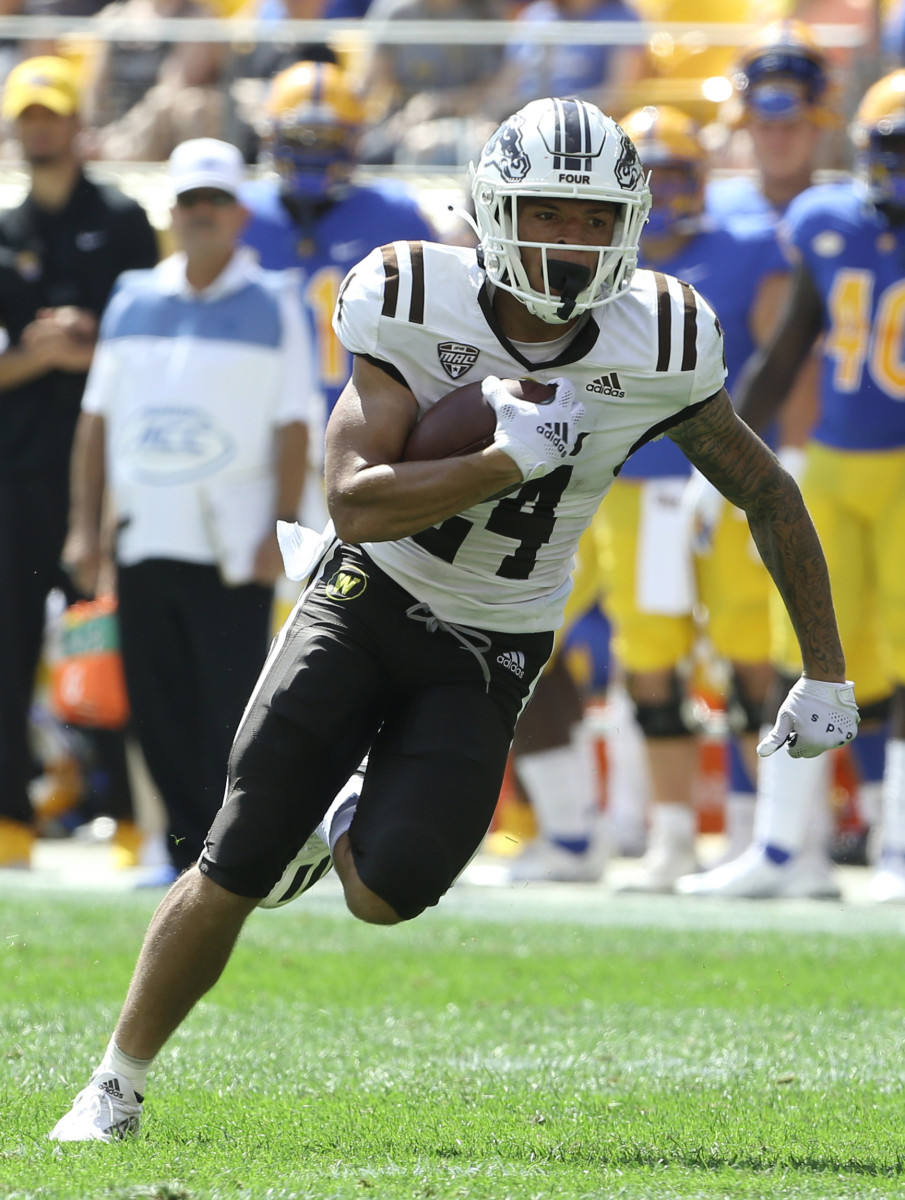
Assuming Ohio State’s Garrett Wilson and USC’s Drake London are off the board, here’s the RAS of the top receiver prospects who could be options in the first couple rounds: North Dakota State’s Christian Watson, 9.96; Cincinnati’s Alec Pierce, 9.82; Georgia’s George Pickens, 9.36; Ohio State’s Chris Olave, 8.67; South Alabama’s Jalen Tolbert, 8.59; Western Michigan’s Skyy Moore, 7.56; Penn State’s Jahan Dotson, 6.31; Arkansas’ Treylon Burks, 5.79; Purdue’s David Bell, 4.01.
8. No Knee-d for RAS
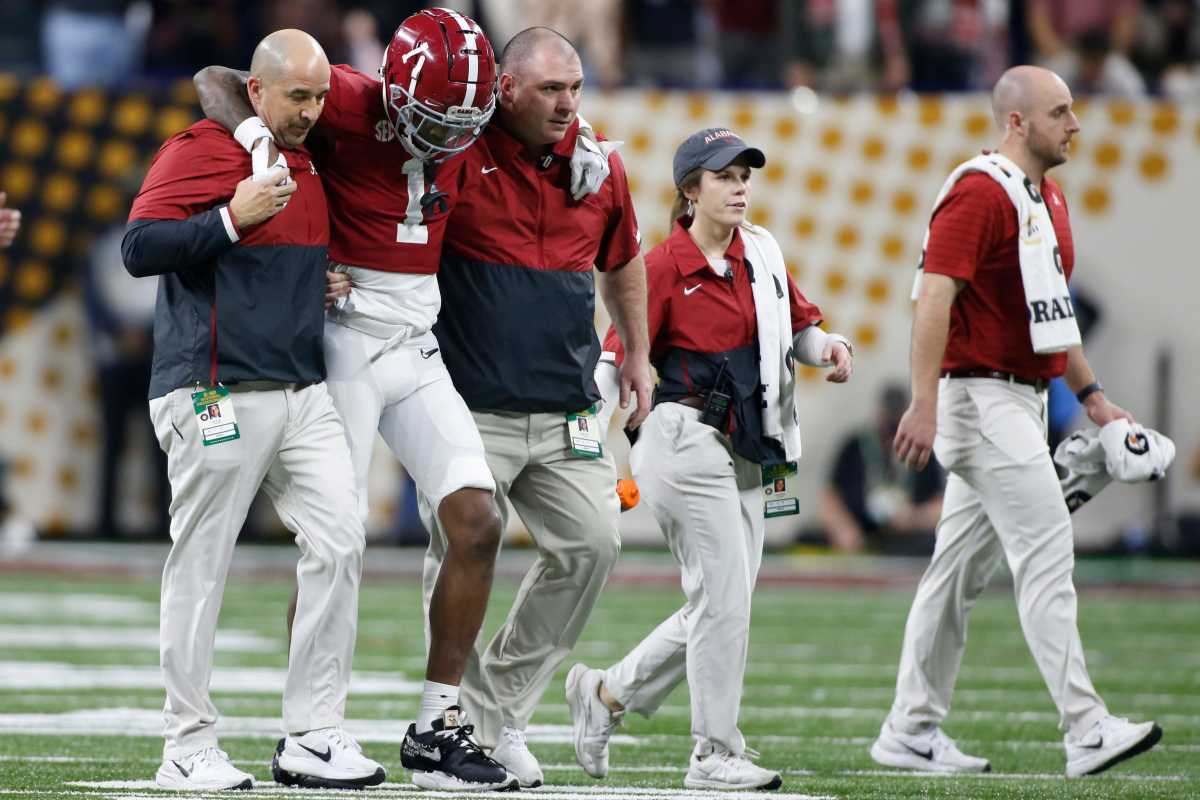
Alabama’s Jameson Williams and John Metchie combined for 175 receptions, 2,714 yards and 23 touchdowns in 2021. However, both players tore their ACLs late in the season. Both have said they’re ahead of schedule in their comebacks but what else would you expect a draft prospect to say?
As the plight of David Bakhtiari showed last season, when he was going through rehab workouts on the field in June but was inactive for the playoffs in January, there are no guarantees when it comes to ACL recoveries. Williams might have been the No. 1 receiver in this class. Even if you project an ambitious comeback, nine months from the date of surgery is Oct. 18. No matter his talent level, how much can a rookie receiver contribute if he misses all of the offseason practices, all of training camp and the entire preseason?
9. Stats to Note for Alabama’s Jameson Williams
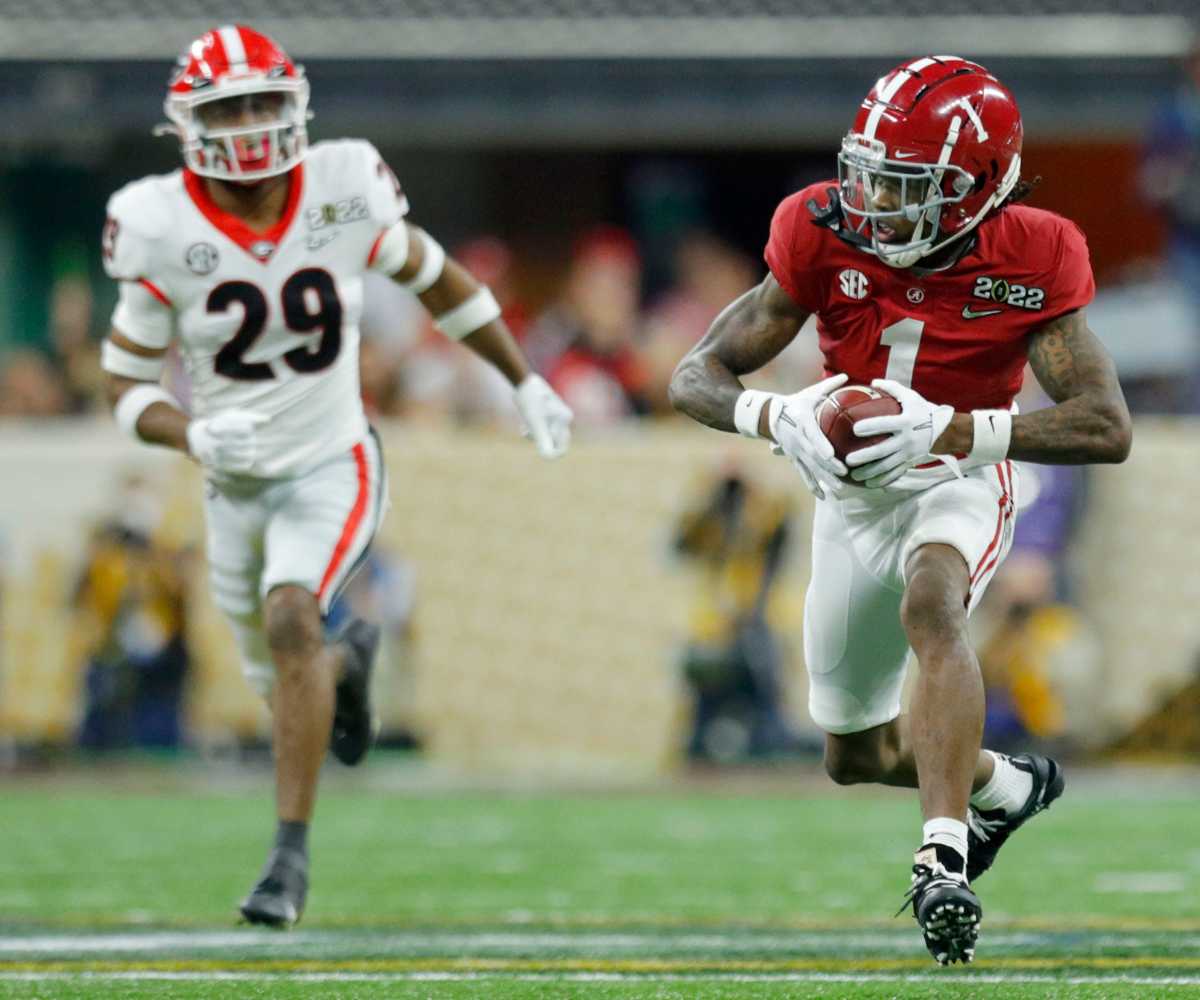
Talk about explosive: Williams scored six touchdowns of 75-plus yards last season – four on catches and two on kickoff returns. In the draft class, according to Sports Info Solutions, he ranked No. 1 in catchable-catch rate (96 percent), No. 1 yards per target (13.1) and No. 3 in yards after the catch per catch (9.5). According to Pro Football Focus, 1,329 of his 1,561 yards came when he was deemed – the most in college football.
10. Stats to Note for Arkansas’ Treylon Burks
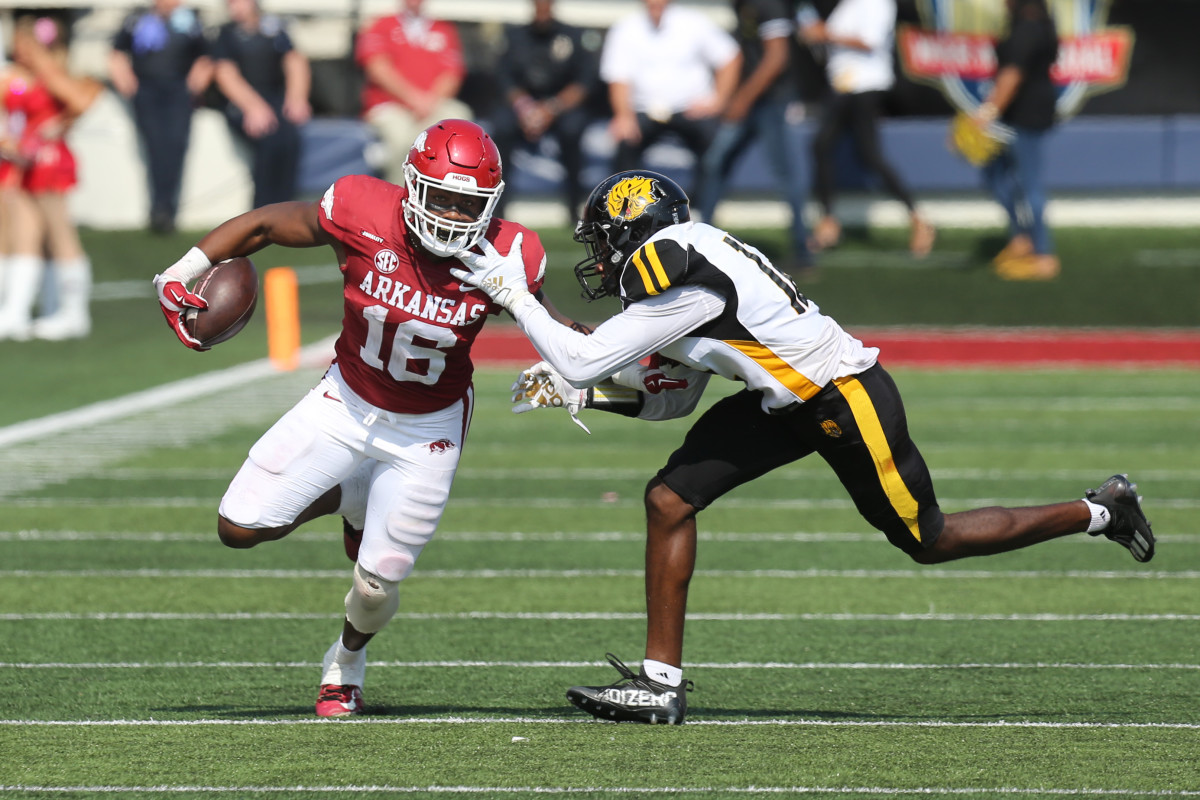
Just get the ball to Burks, who ranked second in the draft class with 9.6 YAC per catch, fourth with 51.5 YAC per game and eighth with 0.24 missed tackles per reception, according to SIS. His missed-tackle rate was at least 0.20 all three seasons. He was shut down by Georgia but destroyed Alabama with eight receptions for 179 yards and two touchdowns, one of his six 100-yard games in 2021. About three-fourths of his career routes have come from the slot.
11. Stats to Note for Ohio State’s Chris Olave
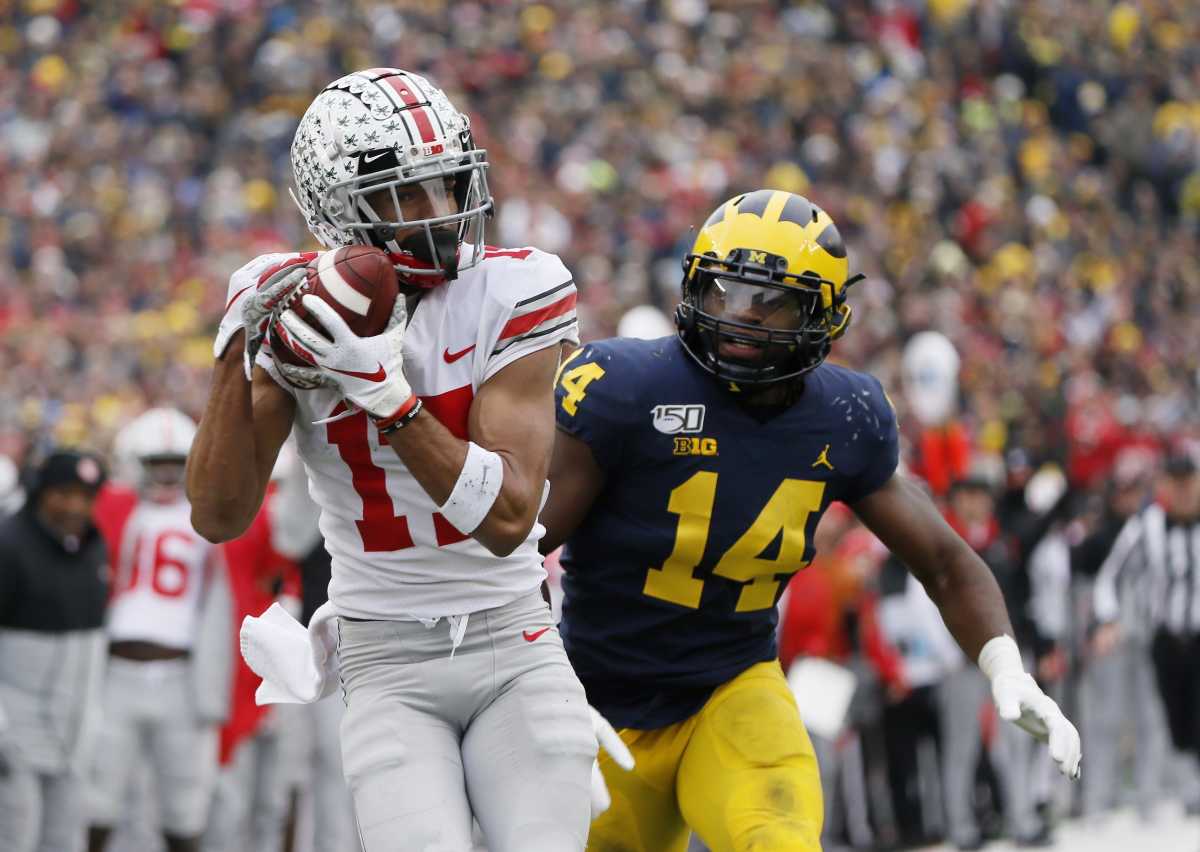
Olave is fast and polished. He scored 32 touchdowns the past three seasons. He should be a Day 1 contributor and the field-stretcher that coach Matt LaFleur desires. However, of 45 draft prospects considered by Sports Info Solutions, Olave tied for last with 0.05 missed tackles per reception. Not big (6-foot), not strong and not explosive (32-inch vertical), he still had a contested-catch rate of 62.5 percent, according to PFF. He had five drops with 99 catches in 2019 and 2020 but seven drops out of 65 receptions in 2021.
12. Stats to Note for Georgia’s George Pickens
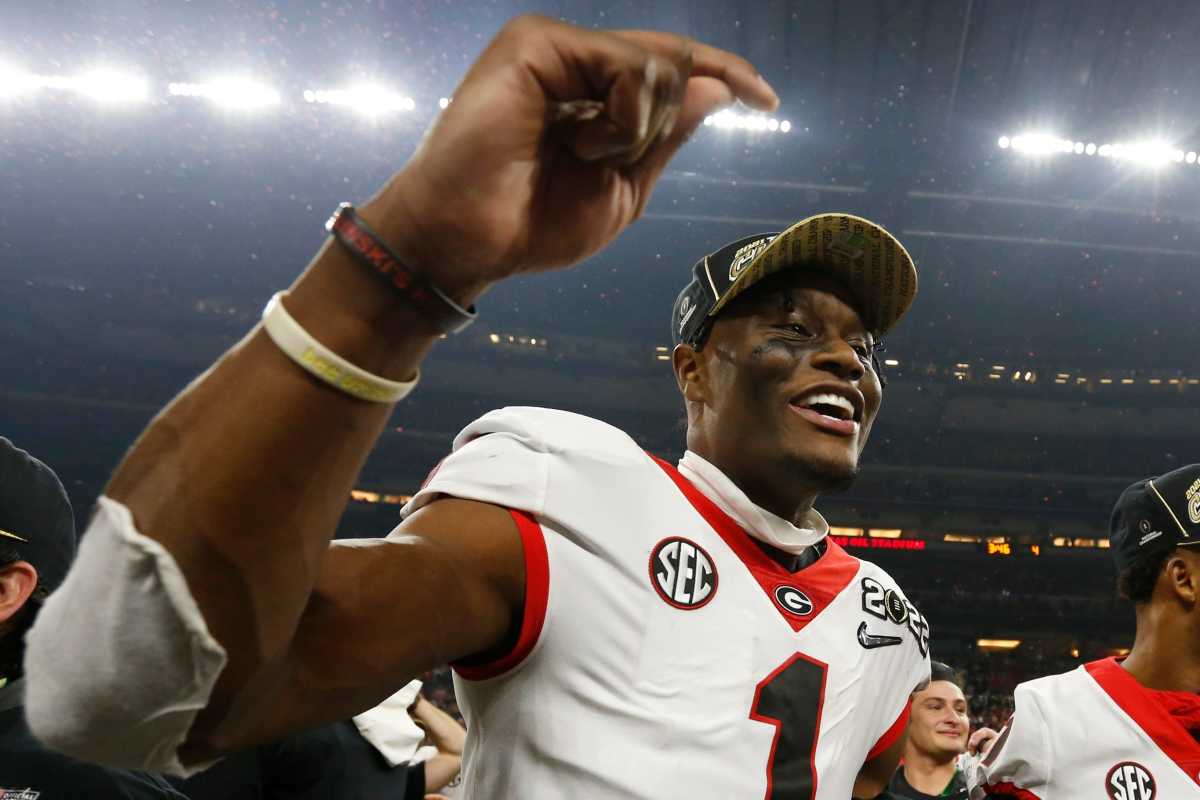
Pickens suffered a torn ACL in March but was back on the field in late November. He had 90 career receptions and only two drops, according to SIS. The two biggest games of his career came in New Year’s bowl games, with 12 receptions for 175 yards and one touchdown vs. Baylor and seven receptions for 135 yards and one touchdown vs. Cincinnati. In 2020, according to PFF, his contested-catch rate was a superb 64.3 percent.
13. Stats to Note for North Dakota State’s Christian Watson
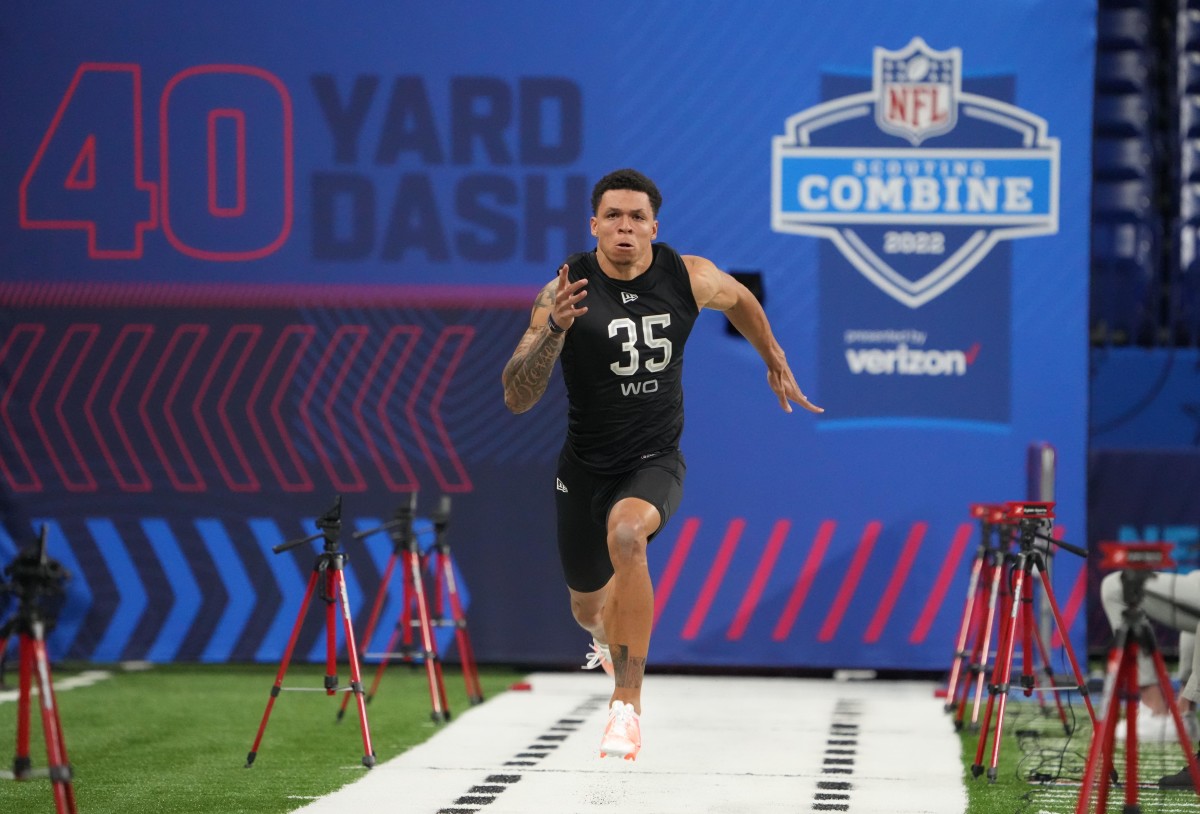
Never mind the FCS roots. Watson has elite tools. His 9.96 RAS trails the likes of Calvin Johnson (10.0), Javon Walker (9.98) and Julio Jones (9.97). Then again, it was tied with Jeff Janis. In a run-first offense, he had four touchdown catches of 65-plus yards. However, there’s some buyer beware: According to Pro Football Focus, Watson for his career had a drop rate of 13.3 percent and caught only 30.0 percent of passes in contested-catch situations, though that improved to 10.4 percent drops and 50.0 percent contested catches in 2021.
14. Stats to Note for Penn State’s Jahan Dotson
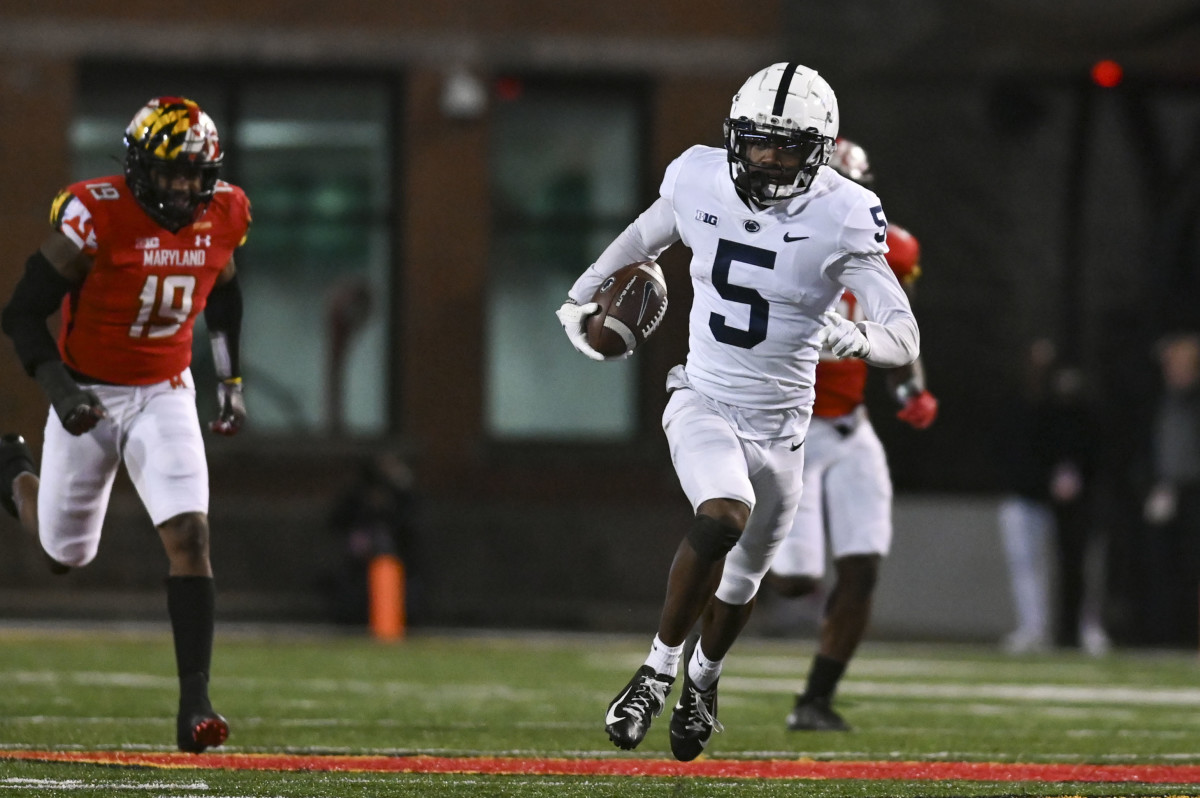
Dotson wins short, long and in between, ranking among the draft class leaders in screens and deep receptions. Of 45 draft prospects considered by Sports Info Solutions, Dotson ranked 36th with 0.10 missed tackles per reception. He has the body of a slot receiver but ran only 28 percent of his routes from the slot last year. He had 91 catches and only two drops in 2021, according to SIS, with a 41.6 percent contested-catch rate.
15. Stats to Note for Cincinnati’s Alec Pierce
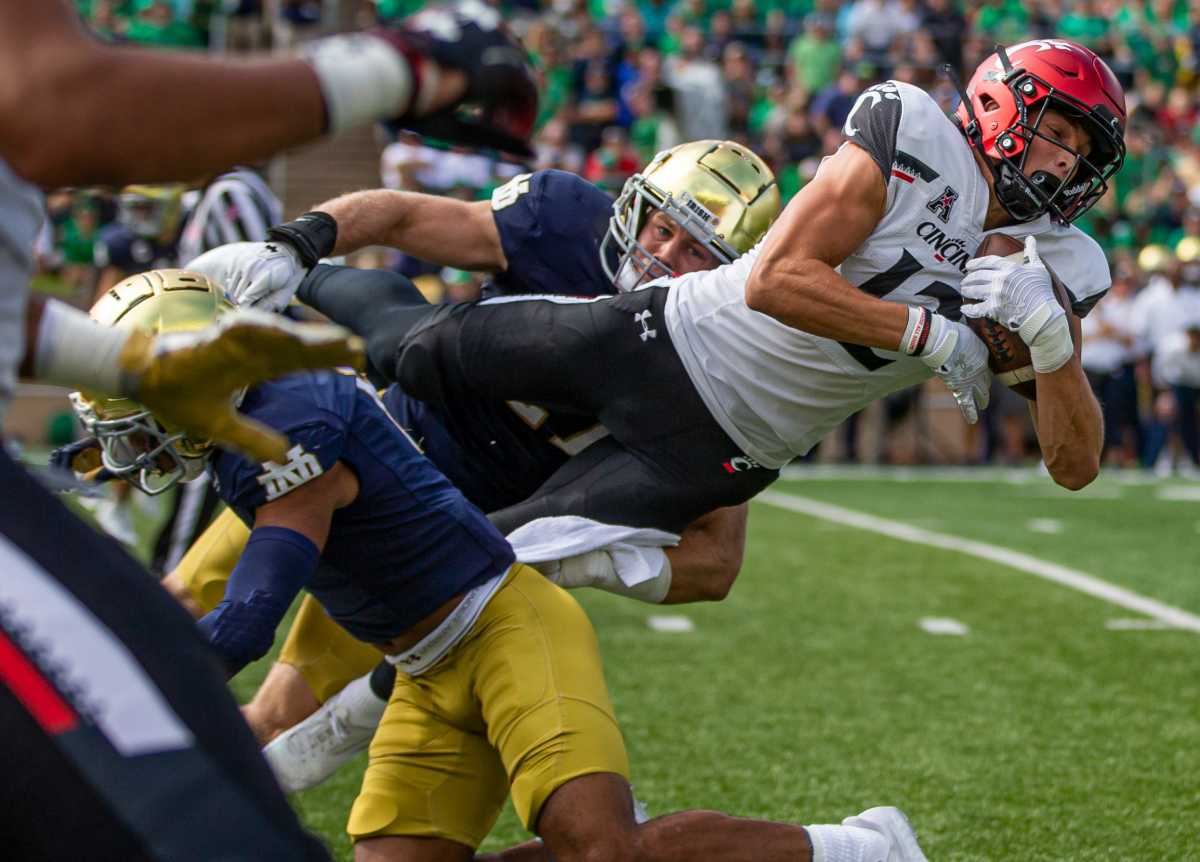
Pierce caught a total of 54 passes with five touchdowns in 2019 and 2020 but 52 passes with eight touchdowns in 2021. Despite his outrageous combination of height (6-foot-3) and jumping ability (41 inches), his contested-catch rate was merely 30.0 percent last season, according to PFF. He ranks toward the bottom of the class in catchable-catch percentage, broken-tackle rate and YAC.
16. Stats to Note for South Alabama’s Jalen Tolbert
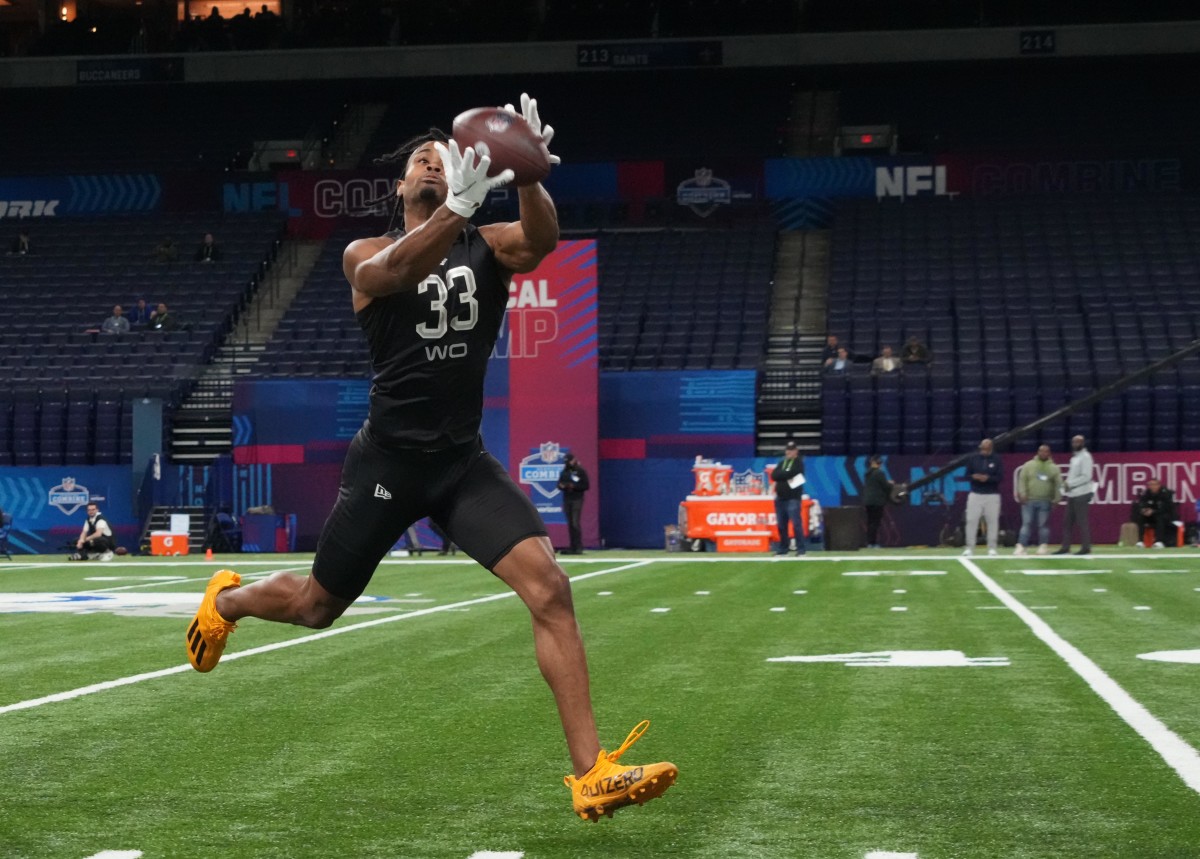
Tolbert is a long-ball artist. Tolbert averaged 18.0 yards per catch in 2021, 17.0 in 2020 and 19.3 in 2019, with a total of 22 touchdowns during those three campaigns. He caught 82 passes with eight drops in 2021. Of the top prospects, his deep-route percentage of 49 percent was No. 1. He ranked sixth in the nation with 16 deep receptions and had a contested-catch rate of 44.4 percent, according to Pro Football Focus. His missed-tackle rate of 0.13 per catch tied for 27th.
17. Stats to Note for Alabama’s John Metchie
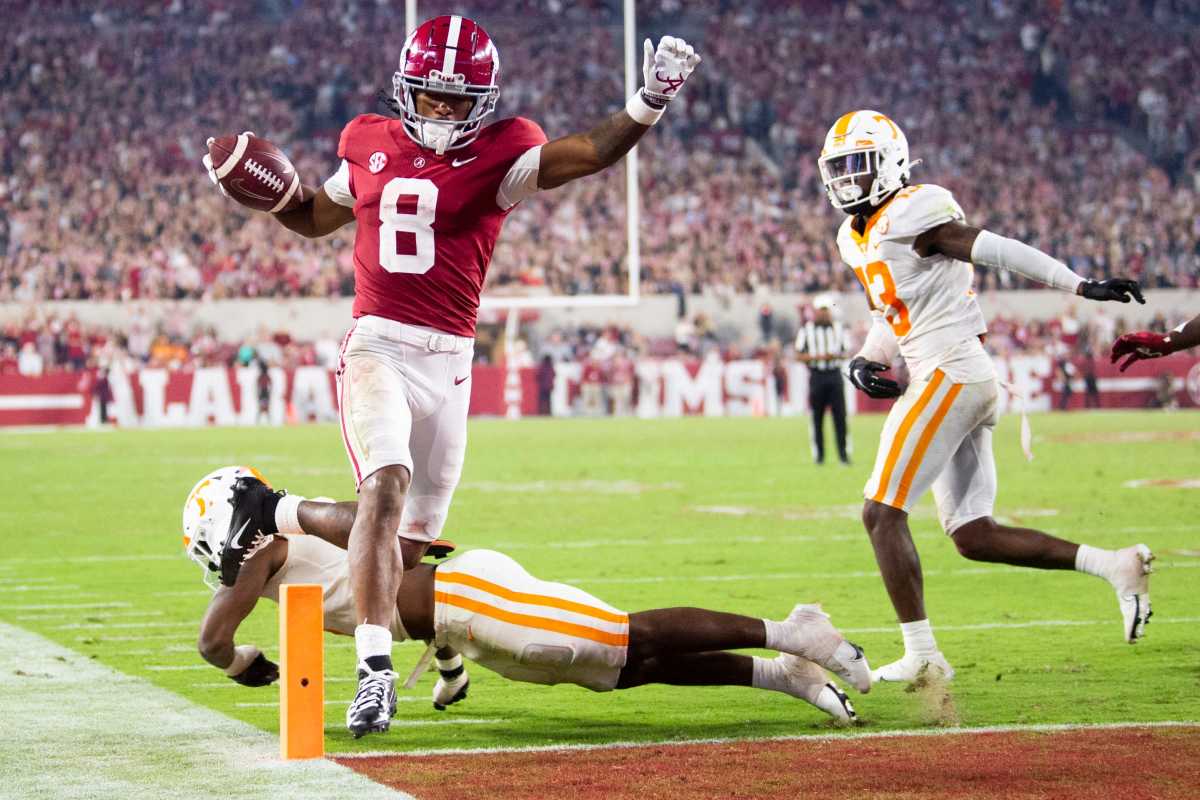
Metchie caught 96 passes, with 33 of those coming on screens. He had six drops. His 0.23 missed tackles per reception ranked 10th, according to SIS; according to PFF, he went from five broken tackles out of 55 receptions in 2020 to 20 broken tackles following 96 receptions in 2021. He’s neither big nor physical but had an excellent contested-catch rate of 61.1 percent, according to PFF.
